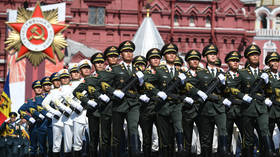China & Russia listed as main rivals in new US maritime strategy aimed at shaping ‘balance of power for the rest of the century’
The US Navy will adopt a more ‘assertive’ approach to China and Russia, according to the country’s new maritime strategy, which says that actions taken in the next decade will determine power dynamics for the rest of the century.
Titled ‘Advantage at Sea’, the document, authored by the Navy, Marine Corps and Coast Guard, calls for greater integration of US naval forces in order to counter “determined rivals” Beijing and Moscow. Describing the nations as “the two most significant threats to this era of global peace and prosperity,” the maritime strategy prioritizes competition with China due to the country’s “growing economic and military strength,” as well as its alleged efforts to “remake the international order in its favor.”
As for Russia, the document says Moscow must be kept in check to prevent it from pursuing an “expanded sphere of influence” and “fragment[ing] the existing international order.”
US naval forces should “accept calculated tactical risks and adopt a more assertive posture in our day-to-day operations” in order to ensure a long-term strategic edge over both “rivals,” the Pentagon plan states.
The strategy warns that the next 10 years will be decisive in determining the global order for the next 80 years.
“We are at an inflection point,” the report reads. “Our actions in this decade will shape the maritime balance of power for the rest of this century.”
Moscow and Beijing have long been singled out by Washington as the top strategic threats to US military dominance. Over the past year, the US Navy has stepped up its activities in the South China Sea, which Beijing has claimed sovereignty over. China has repeatedly warned that the incursions, which the US Navy says are necessary to safeguard marine traffic in the region, could spark a dangerous confrontation.
The US has been involved in similar maritime standoffs with Russia. In November, Russia’s Ministry of Defense said that a Russian destroyer drove the USS John S McCain out of the Sea of Japan after threatening to ram the vessel. The Pentagon denied the report and said the McCain left on its own accord after conducting “normal operations in international waters.”
Like this story? Share it with a friend!














